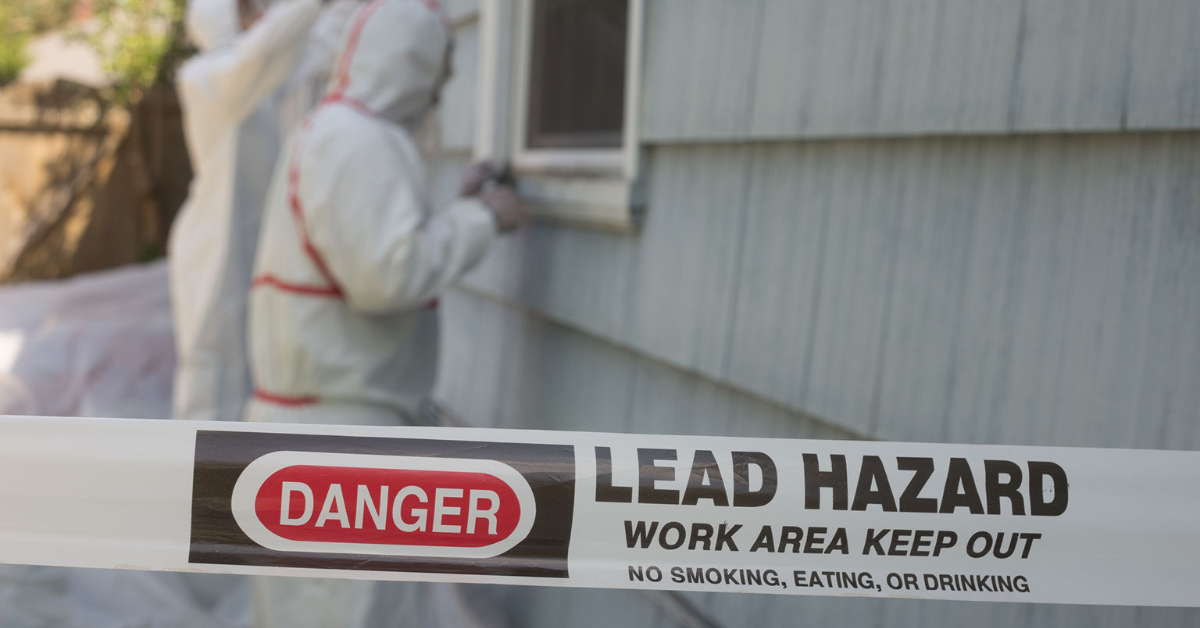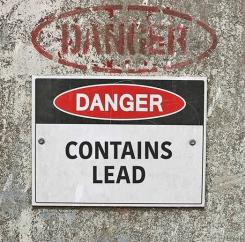Property Owners Share Lead Paint Safety Responsibility
23 February, 2022
23 February, 2022

Contractors involved in RRP compliance might be relieved to know there is now a shared responsibility in lead abatement projects. While they are still required to comply as before, the EPA announced that building and property managers, along with contractors, will be responsible for compliance with the Toxic Substances Control Act (TSCA) and the Lead Renovation Repair and Painting (RRP) Rule. A spokesperson for the EPA answered some questions to shed some light on the decision:
EPA’s experience since 2010 has informed us that there are circumstances where PMCs that hire outside renovation firms also perform, offer or claim to perform the renovations in housing with lead-based paint. This means PMCs often are involved in work that subjects them to the Renovation, Repair and Painting (RRP) Rule which requires certification and lead-safe work practices, among other things.
Our experience, however, has also informed us that many PMCs are not certified and that the impact of non-certified PMC work can be significant. It is important to recognize that PMCs manage a significant portion of the nation's rental housing market, and each PMC often manages a large number of rental housing units. For example, the largest 50 PMCs alone control 3.4 million units. PMCs also manage approximately 205,000 family housing projects, which comprise 99% of privatized military housing. More than 3.18 million children under the age of 6 years live in pre-1980 rental housing. Communities with environmental justice concerns often include a higher proportion of rental housing.
A contractor performing renovations continues to have compliance responsibilities under the Toxic Substances Control Act (TSCA) Lead Renovation, Repair and Painting (RRP) Rule. The contractor and PMC may be independently responsible: either or both may be subject to enforcement and potential penalties depending on their activities, regardless of whether another entity also might be responsible. EPA would assess compliance by PMCs with the RRP Rule, as it would for any other entity, according to the broadly applicable language of the RRP Rule: that no firm may perform, offer, or claim to perform renovations in target housing or child-occupied facilities without certification from EPA, unless the renovation qualifies for a specified regulatory exception.
No, [this change] does not change a contractor’s compliance responsibility. Compliance with the RRP Rule’s requirements for certification and lead-safe work practices prevent the release of lead-based paint hazards such as paint chips and dust containing lead that may harm children and others.
Contractors should maintain their certifications and obtain re-certification on time; and continue to comply with the RRP Rule’s lead-safe work practices and other requirements. More information about lead and the importance of protecting workers and residents, as well as children, is available at epa.gov/lead.

I have been lead certified for about 8-10 years. I haven’t seen too much enforcement from the EPA, to be honest — the only ones that got caught were the ones who got ratted out. I’m all for safety, and do my work by the book. My experience with the lead jobs is that everyone wants a letter written saying house is safe for sale. I only really did a handful of actual jobs as no one wants to pay to have it done correctly. I feel building managers, superintendents, etc. should be trained, especially since the lead in the building can be disturbed by several different trades, most of whom are unaware of the lead laws or rules.
We do many projects that include lead paint remediation: schools, historical society landmarks, older office buildings and municipal work. I would welcome “shared responsibility” for the proper means & methods in legally removing these coating and the proper disposal at the completion of the project. Building owners have skin in the game and much more apt to follow the letter of the law and insist on it being done by the book.
I think this new ruling will help hold all parties more accountable.
IF EPA got it right the first time, then this action would not be necessary. Our position is that the Property Management Company functions as a general contractor in disguise. Therefore, they should march to the same orders EPA holds renovation contractors’ and painters’ feet to the fire regarding compliance. Lead is a terrible neurotoxin and people involved in renting, repairing and selling properties that contain this element need to understand the moral obligation to those human beings that decide to give you their hard-earned money for a safe place to live.
The recent clarification to the EPA’s RRP rule fixes confusion regarding property managers’ responsibilities under the law. So far, the City of Toledo has received no reports of issues from property management companies. We believe most property managers were already under compliance with the rule or are now becoming fully certified.
Check out how the EPA handles RRP infractions in our previous reporting:


OSHA hands out huge fines while nearby homeowners face expensive…
Read Now
Alberta painter saw more advantages to buying a company than starting…
Read Now
A good waiter won’t tell you what entrees to avoid, but should a good…
Read Now
Comments
New EPA RRP Laws
So in short the article says that the only change would be the EPA can now fine both the contractor responsible for the abatement and the property management companies or building management/owner rather then just the contractor, But the contractor is still ultimately responsible once the abatement starts. How does this change anything when the cause they are claiming is that PMCs are hiring non certified abatement contractors or hiring a certified one who in turn sub contract to non certified contractors or personal who come in under the radar off hours and do the work. How does this stop that? On paper you can't tell who did the work a certified competent person or someone that did pay their dues and go through all the training. And this only goes for projects under order by the state. Meaning a child or person got sick from the building in question and the state has stepped in. There are many more projects that never even get to this stage but are abated by non professionals. It sounds like a way for the EPA to just get their sticky fingers deeper in the pot. I live in New Hampshire one of the states with some of the oldest buildings in our country here you must be both certified by the EPA as well as the state to become an abatement contractor. There is no shortage of abatement projects its just frustrating knowing that the only businesses being looked at are the ones who are doing it by the book and putting in the hours for training and paying our dues. Just like it's always been just now the EPA can fine more people for the same offense. We'll see how this goes?
Good luck to all of us who go by the book to not poison your children.
More Socialist government at work
You can choose to publish this or not, it is still the truth and you know it ! A fine example of more money grab from a broken administration, taking from those working and giving to those who won't! I have been in business from the beginning of this fiasco. Ever since 1978 when paint companies were forced to change from clay pigments to synthetic, they have tried every way possible to grab money from the working public. Shortly after 1978 they ordered that all pre 1978 paint had to be removed from all structures in the United States, residential, commercial and industrial! That is not my words but a direct quote from the EPA handbook. Fortunately the boneheads realized there was not enough money anywhere to accomplish such a foolish idea. Now they want to be sure to collect and further fund their overeach, if they can't get money from the painter then maybe the general will pay, if not him then the manager or.......they just want the money with no regard to an already damaged industry, damaged by the current administration or lack of one.
Property Owners Share.....
I did not expect you to publish my comment, it was too honest. I'm sorry I don't know how to express myself any other way except truthfully. APC mag has really changed.....
Add new comment